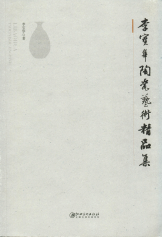
主要责任者: 李宝华
责任方式: 著
出版者: 江西美术出版社
出版地: 南昌
页码: 1-86
开本: 16
中图分类号: J527
装帧: 简
语种:中
定价:60.00
出版时间:2013-05
丛书多卷书否:否
书目简介:本册工具书共收录72条词条。
| 词条 | 李保华陶瓷艺术精品集 |
| 类别 | 中文百科知识 |
| 释义 |  主要责任者: 李宝华 责任方式: 著 出版者: 江西美术出版社 出版地: 南昌 页码: 1-86 开本: 16 中图分类号: J527 装帧: 简 语种:中 定价:60.00 出版时间:2013-05 丛书多卷书否:否 书目简介:本册工具书共收录72条词条。 |
| 随便看 |
开放百科全书收录579518条英语、德语、日语等多语种百科知识,基本涵盖了大多数领域的百科知识,是一部内容自由、开放的电子版国际百科全书。